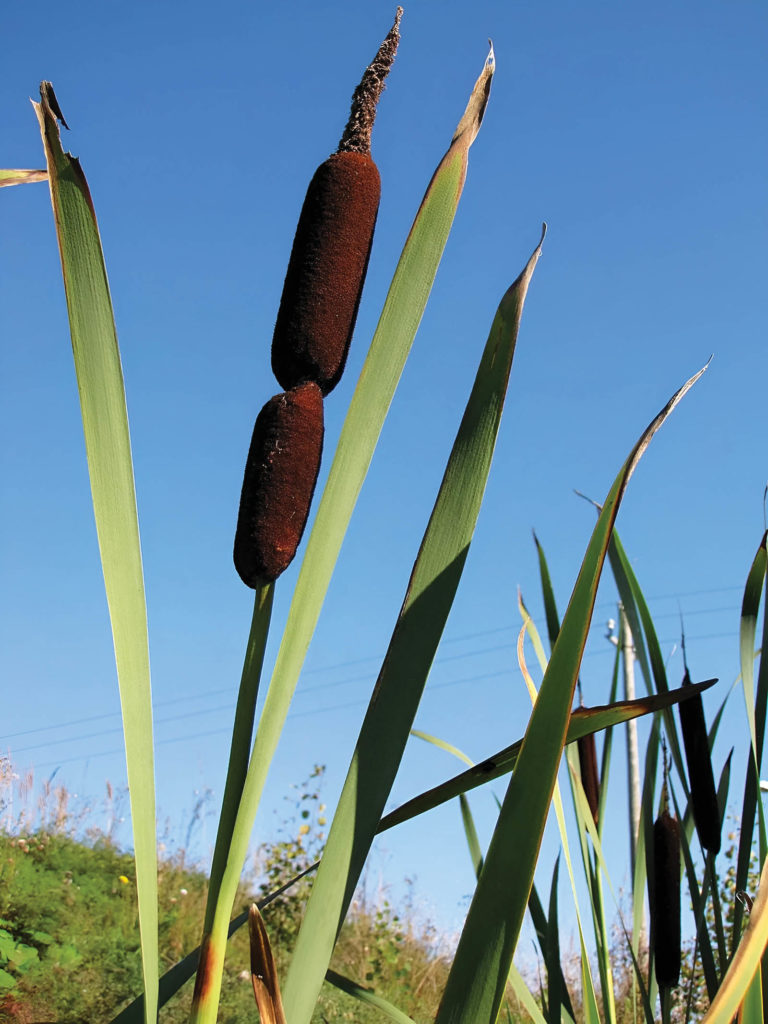
When it comes to providing warmth, textile products are routinely filled with unsustainable filling materials such as down feathers or polyester fibers. Master’s degree students at Helsinki’s Aalto University, have created a process that replaces those textile fillings with a natural alternative while fostering sustainable farming practices.
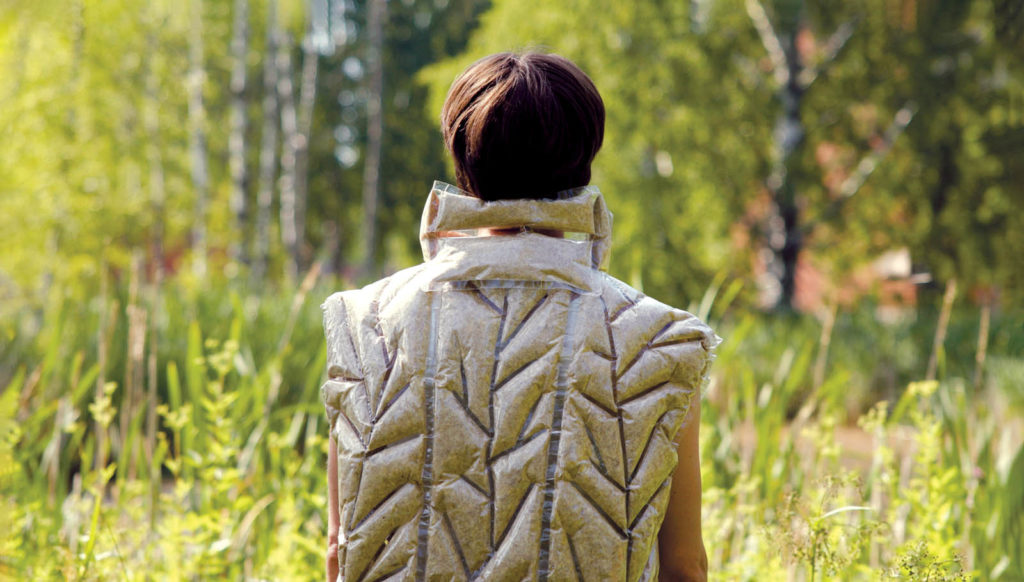
Lukas Schuck and Tea Auramo have designed prototype products using what they have dubbed Fluff Stuff, a textile filling created from plants cultivated on rewetted peatlands in Finland. Drained peatlands account for about 60% of agricultural carbon emissions in Finland, according to the Fluff Stuff website. Restoring natural water flow and saturating peatland through a process called “rewetting” effectively stops these CO2 emissions. The Fluff Stuff project aims to restore rewetted peatlands while also providing a more sustainable solution to creating textile filling. “Fluff Stuff rethinks Finnish peatland management and the Finnish textile industry by connecting bio-based material innovation with regenerative agricultural practices,” Auramo says. “Our goal is to eliminate polyester and down from the world.”
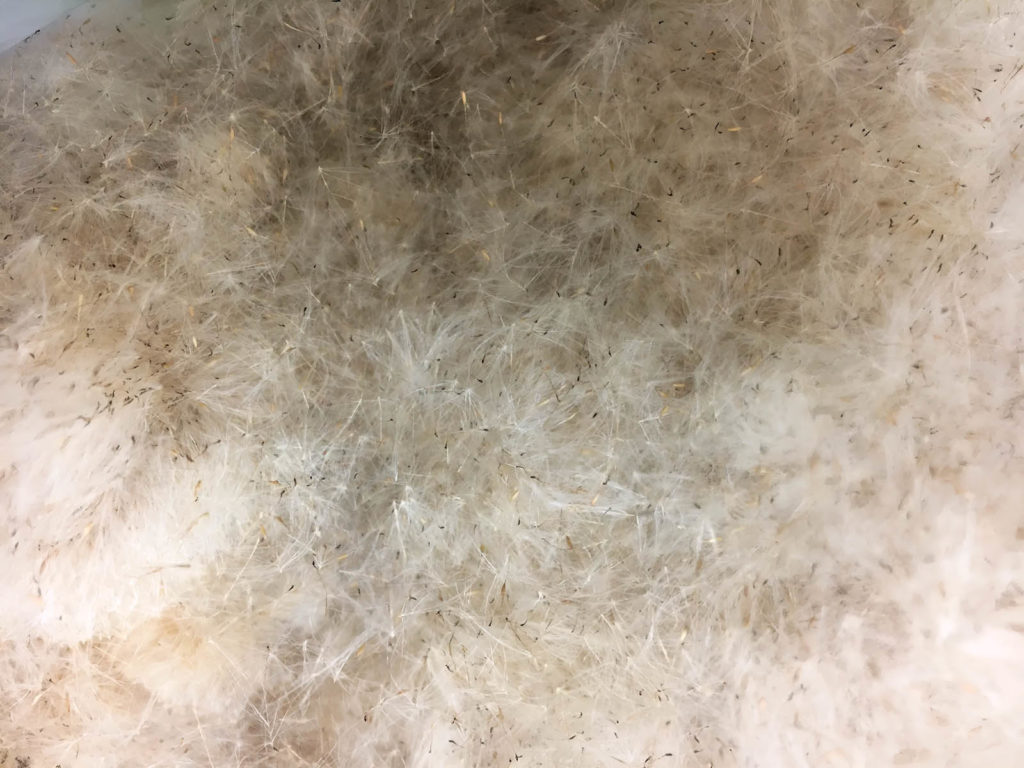
Fluff Stuff’s prototype products include pillows, cushions and duvets as well as clothing stuffed with plant fibers instead of traditional, carbon-intensive down filling. Each product is stuffed with plant fibers from typha latifolia, commonly known as broadleaf cattail. The plants are found in Finnish peatlands but grow in similar climates around the world.
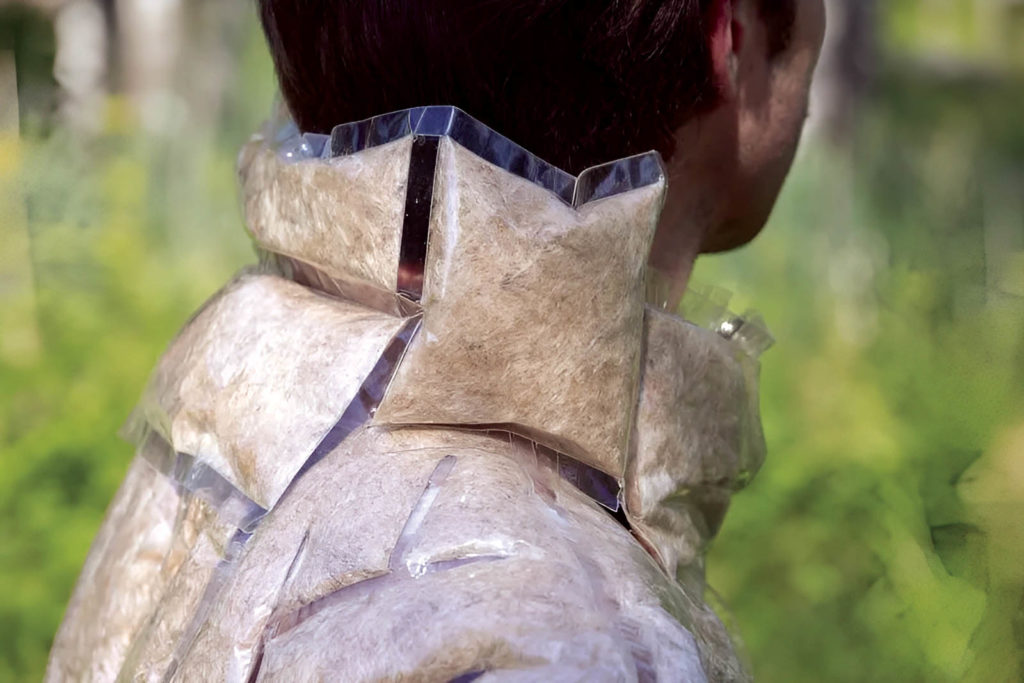
Typha latifolia fibers are naturally coated by a wax layer, making them highly hydrophobic. According to the Fluff Stuff team, cattail fibers absorb 66% less water than down and dry twice as fast.
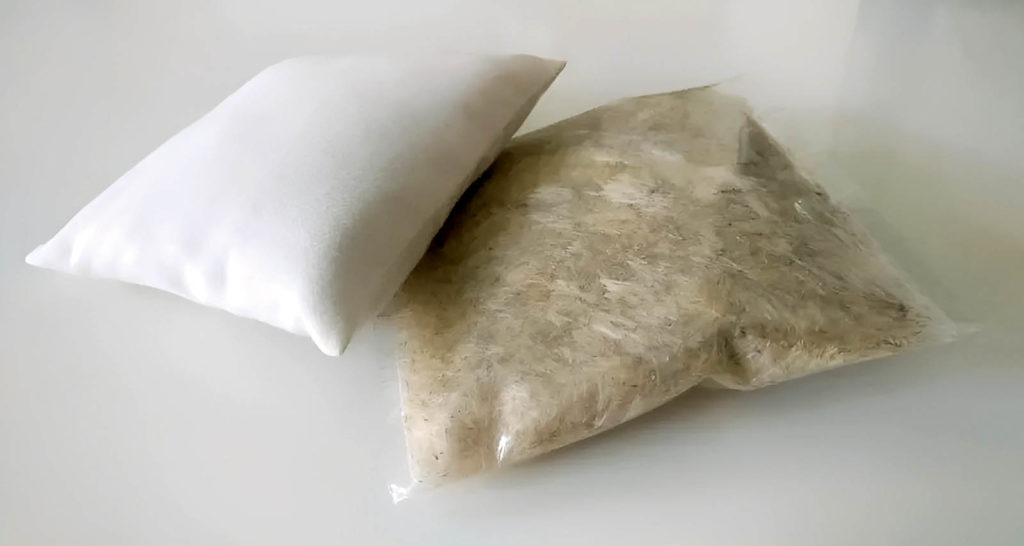
Currently, the plants are harvested from rewetted peatlands in Finland using a prototype handheld machine that extracts the cattails through suction.
 TEXTILES.ORG
TEXTILES.ORG


